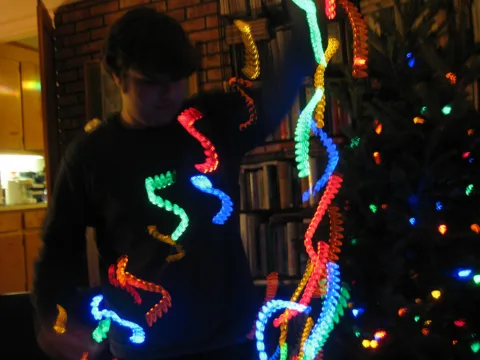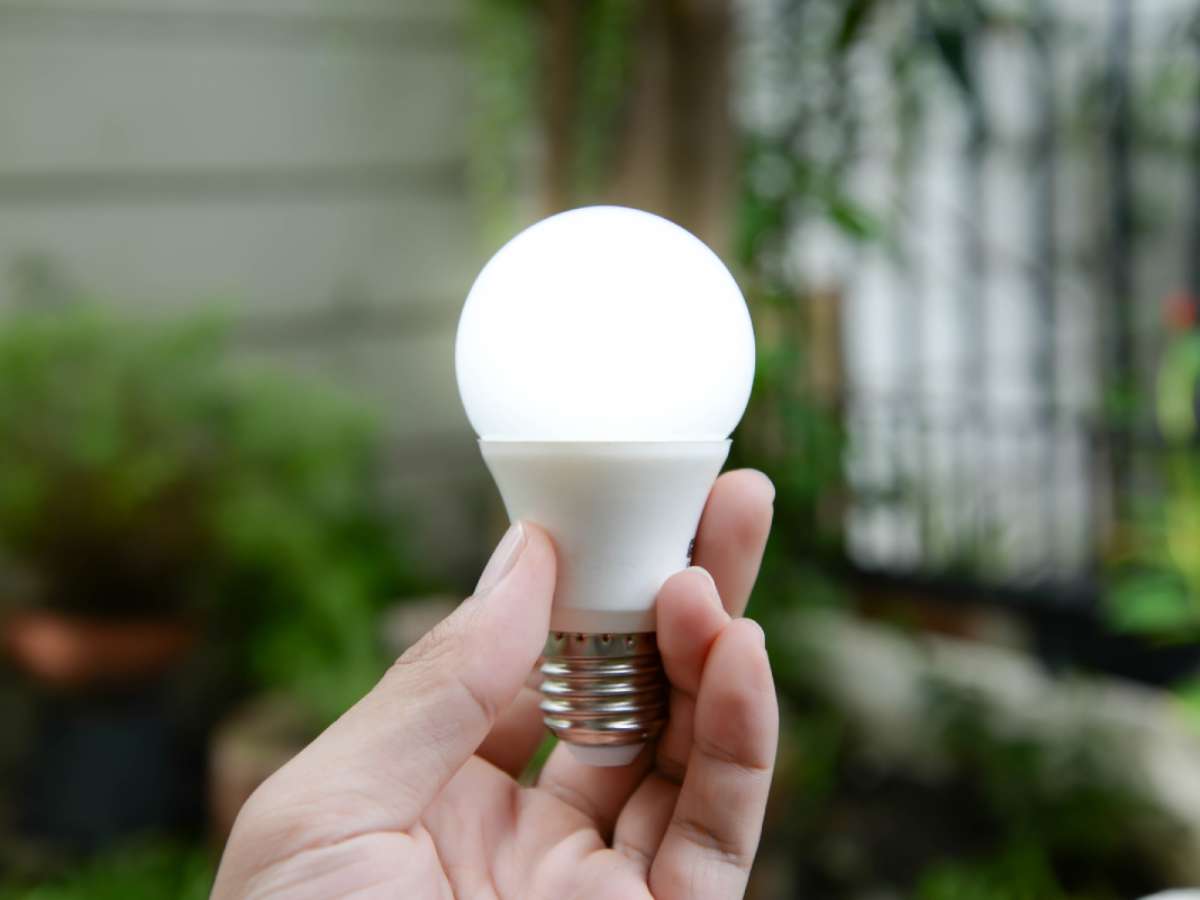I love brightening up the holiday season at home with LED Christmas tree lights and other lighted decorations — even if that means it’ll cost a few more bucks (reindeer?) on the electric bill.
And, hey, I don’t mind spending the extra money on the power bill to light up the holiday lights because I really just can’t imagine the Christmas season without seeing eaves lit up with dozens upon dozens of red, blue, yellow, green, and purple lights.
But I’ve learned over the past few years that LED Christmas lights are the way to go when it comes to cutting back on power usage without sacrificing on the electrically charged holiday cheer. LED Christmas lighting helps keep our planet greener, too.
How can these LED holiday lights keep more green in your wallet and keep the earth greener, too?
Here are 3 ways that LED Christmas tree lights are better than incandescent lights…
#1 – LED Christmas Lights Are Cheapest Over The Long Term
It was in 2008 that I first embraced LED Christmas lights. They were definitely more expensive back then than they are today, but I also knew they are cheaper to run over the course of time than the traditional incandescent Christmas lights.
In fact, by some estimates, LED Christmas lighting uses 80 to 90% less energy than similarly rated incandescent bulbs. That means you’ll definitely save on your holiday-time energy bills and can connect more strings of lights together from a single power outlet.
I know it can sound like a sales pitch to say that LED Christmas lights are cheaper to run than incandescent Christmas lights, so I put the claim to the test.
Check out this Holiday Lighting Energy Calculator by Duke Energy.
Basically, it’s a free, simple online tool where you plug in the number and type of Christmas lights you use, then get an estimate on how much you spend per day and per month to run your Christmas lights.
So, I figure I’m using about 400 LED lights and around 150 or so incandescent Christmas lights — each of various sizes. The Holiday Lighting Energy Calculator estimates that I spend about 18 cents a day (based on 6 hours of daily use) or $5.29 a month to run the Christmas light display at home.
I know what you’re thinking… This guy has only 550 lights?
Well, I live in a smallish townhouse, so there’s not too much exterior to decorate.
But, someday I hope to have 25,000 sparkling lights hanging along the walls, gutters, and roof, just like Clark Griswold (played by Chevy Chase) in National Lampoon’s Christmas Vacation! All LED Christmas lights though, of course.
#2 – LED Christmas Lights Reduce Waste At Landfills
LED Christmas lighting not only uses less energy to run than incandescent lighting, but it also lasts longer, too.
Consider this:
- Incandescent Christmas lighting typically lasts for about 3,000 hours.
- LED Christmas lights are rated for 25,000 to 75,000 hours of use.
There’s simply no comparison in longevity.
In theory, even if you run your Christmas tree lights around the clock for 3 months out of the year, you’ll still be able to use the same LED Christmas lighting for 20 years or more!
Meanwhile, incandescent Christmas lights used for 8 to 12 hours a day for, say 2 months at a time, may last between 1 and 3 holiday seasons. Which means you’ll be discarding your incandescent Christmas lights more often and also have to buy new ones more frequently.
You’ll also save money on those LED Christmas lights because you won’t need to replace them nearly as often as incandescent lights and, again, they’ll save you hard-earned dough on your energy costs.
#3 – LED Christmas Lights Place Less Strain On Natural Resources
Since you won’t have to replace LED Christmas lighting as often as you would incandescent Christmas lights, that also means you’ll be giving natural resources a break. After all, the fewer strings of Christmas lights you buy, the less of an impact you’ll have on the natural resources that go into manufacturing holiday lights.
Just some of the things that are needed to make Christmas lights:
- Plastic
- Glass
- Wire
And all of those products require water, produce carbon emissions during the manufacturing process, and exhaust many other resources — just to make a single strand of Christmas lights.
So, the choice is pretty clear…
Buy one strand of incandescent lights that may need to be replaced by 10 to 15 more strings of Christmas cheer over the next say… oh — 20 years. Or buy a single strand of LED Christmas lights that could last possibly 2 or, if you’re lucky, even 3 decades.
Me? I’m going to keep making my season bright with LED Christmas tree lights.





